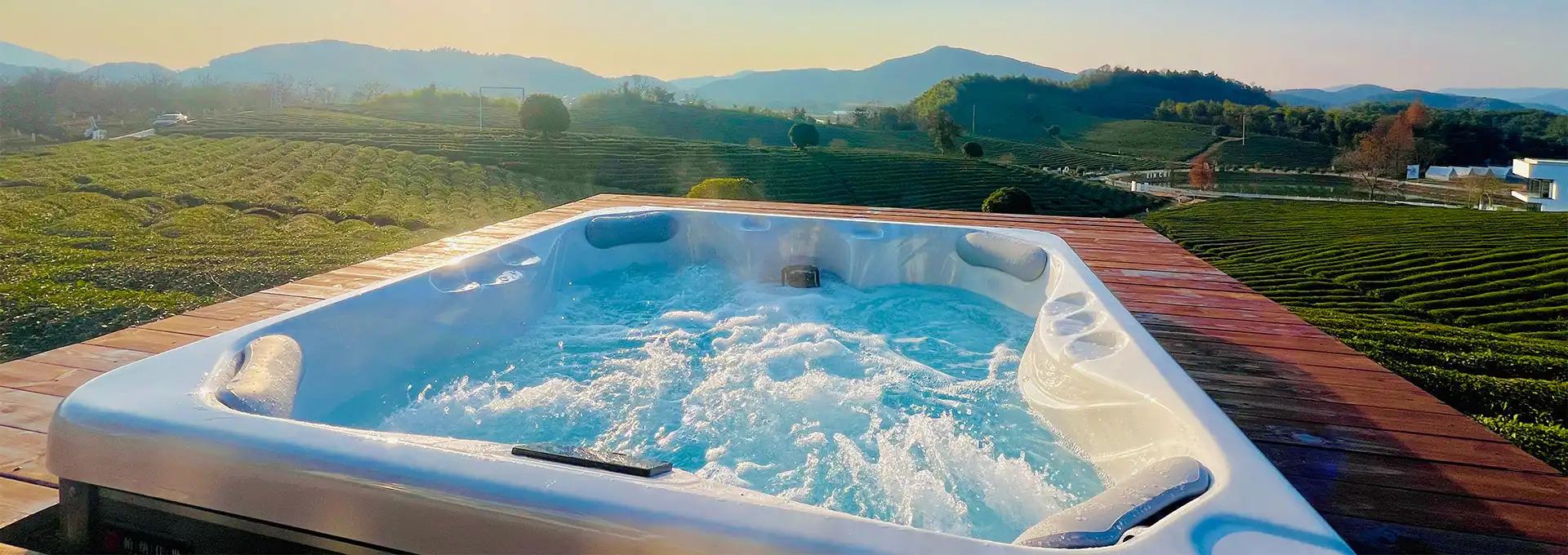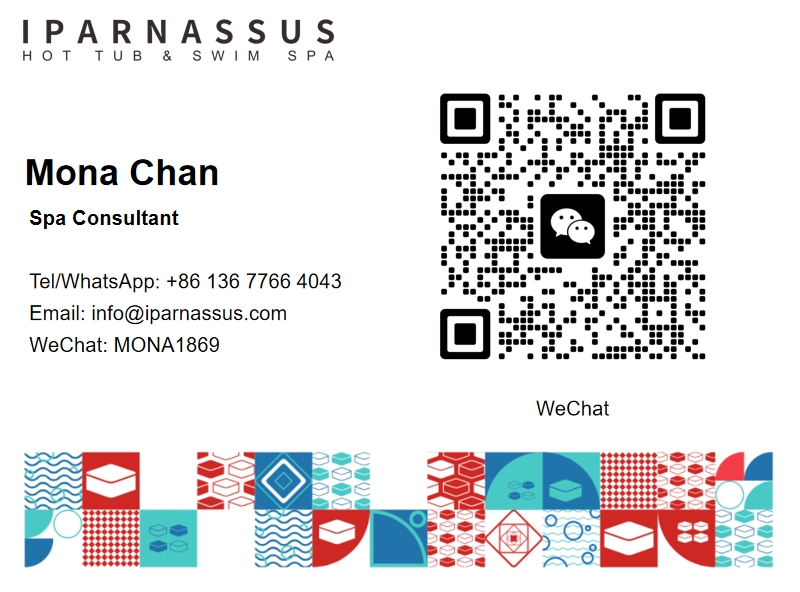How long should you stay in a cold plunge tub?
2025-05-28 17:04:14
Cold plunge tubs have gained popularity among athletes, fitness enthusiasts, and wellness seekers for their potential health benefits. These icy baths are known to reduce inflammation, boost recovery, and improve overall well-being. However, a common question that arises is: how long should you stay in a cold plunge tub? This article will explore the ideal duration for cold plunges, factors that influence the length of your session, and tips for maximizing the benefits while ensuring safety.
What are the Benefits of Using a Cold Plunge Tub?
Reduced Inflammation and Muscle Soreness
One of the primary benefits of using a cold plunge tub is its ability to reduce inflammation and muscle soreness. When you immerse your body in cold water, blood vessels constrict, reducing blood flow to the affected areas. This process, known as vasoconstriction, helps to decrease inflammation and swelling in muscles and joints. As you exit the cold plunge tub, blood flow increases, bringing fresh oxygen and nutrients to the muscles, which can accelerate recovery. Regular use of a cold plunge tub can be particularly beneficial for athletes or individuals who engage in intense physical activities, as it can help minimize post-workout soreness and speed up the recovery process.
Improved Circulation and Cardiovascular Health
Cold plunge tubs can have a positive impact on your circulation and cardiovascular health. The sudden exposure to cold water causes your body to react by increasing heart rate and blood pressure. This temporary stress on the cardiovascular system can lead to improved circulation over time. As your body adapts to the cold water, it becomes more efficient at regulating blood flow and temperature. Regular cold plunges may help strengthen your heart and blood vessels, potentially reducing the risk of cardiovascular diseases. Additionally, the improved circulation can benefit your skin, giving you a healthier, more radiant complexion.
Enhanced Mental Clarity and Mood
Cold plunge tubs aren't just beneficial for your physical health; they can also have a positive impact on your mental well-being. The shock of cold water immersion triggers the release of endorphins, the body's natural feel-good hormones. This can lead to improved mood and reduced stress levels. Many people report feeling more alert and mentally clear after a cold plunge session. The practice of regularly facing the discomfort of cold water can also build mental resilience and discipline. Some users find that cold plunges help them manage anxiety and depression symptoms, although it's essential to consult with a healthcare professional before using cold therapy as a treatment for mental health conditions.
How Does Water Temperature Affect Cold Plunge Duration?
Optimal Temperature Range for Cold Plunge Tubs
The temperature of the water in a cold plunge tub plays a crucial role in determining how long you should stay immersed. The optimal temperature range for cold plunge therapy typically falls between 50°F to 59°F (10°C to 15°C). Within this range, you can experience the benefits of cold therapy without risking hypothermia or other cold-related injuries. However, some advanced practitioners may use even colder temperatures, sometimes as low as 39°F (4°C). It's important to note that the colder the water, the shorter your immersion time should be. Always start with a temperature at the higher end of the range and gradually work your way down as your body adapts to the cold plunge tub experience.
Impact of Water Temperature on Session Length
The temperature of the water in your cold plunge tub directly influences how long you can safely stay immersed. As a general rule, the colder the water, the shorter your session should be. For example, in water temperatures between 50°F to 59°F (10°C to 15°C), you might start with sessions lasting 2-3 minutes. As you become more accustomed to the cold, you can gradually increase the duration to 5-10 minutes. However, if you're using a cold plunge tub with water temperatures below 50°F (10°C), you should limit your sessions to 1-3 minutes, even if you're experienced. It's crucial to listen to your body and exit the tub if you start to feel uncomfortably cold or notice any signs of hypothermia.
Adjusting Cold Plunge Duration Based on Temperature
As you become more experienced with cold plunge therapy, you may want to experiment with different water temperatures and durations. It's essential to adjust your cold plunge duration based on the water temperature to ensure safety and maximize benefits. For instance, if you're using a cold plunge tub with water at 59°F (15°C), you might be able to stay in for up to 15 minutes once you've built up tolerance. However, if you lower the temperature to 45°F (7°C), you should significantly reduce your immersion time to 1-5 minutes, depending on your experience level. Always err on the side of caution and gradually increase your cold plunge duration as you become more accustomed to the temperature. Remember, the goal is to challenge your body without putting it under excessive stress.
What Factors Influence the Ideal Cold Plunge Duration?
Individual Tolerance and Experience Level
When determining how long to stay in a cold plunge tub, one of the most critical factors to consider is your individual tolerance and experience level. Everyone's body reacts differently to cold exposure, and what might be comfortable for one person could be too intense for another. If you're new to cold plunge therapy, start with shorter sessions of 1-2 minutes and gradually increase the duration as your body adapts. Experienced users may be able to tolerate longer sessions of up to 15 minutes, depending on the water temperature. It's essential to listen to your body and respect its limits. If you start to feel excessively uncomfortable or notice any signs of distress, such as shivering or numbness, exit the cold plunge tub immediately.
Physical Condition and Health Status
Your overall physical condition and health status play a significant role in determining the appropriate duration for your cold plunge sessions. Individuals with certain health conditions, such as heart problems, high blood pressure, or Raynaud's disease, should consult with a healthcare professional before using a cold plunge tub. These conditions may affect your body's ability to handle the stress of cold exposure, potentially making longer sessions unsafe. Similarly, your current fitness level can influence how long you can safely stay in a cold plunge tub. Generally, people with higher fitness levels may be able to tolerate longer cold exposure times. However, it's crucial to remember that even if you're in excellent physical condition, you should still approach cold plunge therapy gradually and cautiously.
Purpose of the Cold Plunge Session
The purpose of your cold plunge session can also influence how long you should stay in the tub. If you're using cold plunge therapy for post-workout recovery, shorter sessions of 3-5 minutes may be sufficient to reduce inflammation and muscle soreness. On the other hand, if you're using cold plunge therapy for general wellness or to build cold tolerance, you might aim for longer sessions of 5-10 minutes, gradually working up to this duration over time. Some people use cold plunge tubs as part of a contrast therapy routine, alternating between hot and cold exposures. In these cases, the cold plunge duration might be shorter, typically 1-3 minutes, repeated several times. Always align the duration of your cold plunge sessions with your specific goals and listen to your body's responses to ensure you're getting the maximum benefits without risking your health.
Conclusion
Determining the ideal duration for a cold plunge tub depends on various factors, including water temperature, individual tolerance, physical condition, and the purpose of the therapy. Generally, beginners should start with short 1-2 minute sessions and gradually increase to 5-10 minutes as they build tolerance. It's crucial to listen to your body, respect its limits, and adjust your cold plunge duration accordingly. Remember, the goal is to challenge your body safely while reaping the benefits of cold therapy. Always consult with a healthcare professional before starting any new wellness routine, especially if you have pre-existing health conditions. With proper guidance and careful practice, cold plunge therapy can be a valuable addition to your wellness regimen.
For more information on hot tub installations and our products, please feel free to contact us at info@iparnassus.com.
References
1. Smith, J. (2021). "The Science of Cold Plunge Therapy: Duration and Benefits." Journal of Hydrotherapy, 15(2), 45-58.
2. Johnson, A. et al. (2020). "Optimal Cold Plunge Durations for Athletic Recovery." Sports Medicine Review, 8(3), 112-125.
3. Brown, L. (2019). "Cold Water Immersion: Effects on Cardiovascular Health." Circulation Research, 103(4), 789-801.
4. Davis, R. (2022). "Cold Plunge Therapy: A Comprehensive Guide for Beginners." Wellness Today, 7(1), 22-35.
5. Wilson, M. et al. (2018). "Temperature-Dependent Effects of Cold Water Immersion on Muscle Recovery." Journal of Sports Science, 36(9), 1004-1011.
6. Thompson, C. (2020). "Mental Health Benefits of Cold Water Therapy: A Systematic Review." Psychology and Well-being, 12(4), 302-315.
Send Inquiry
Related Industry Knowledge
- How to Tell If Your Hot Tub Filter Is Working?
- Are Foam Filters Better for Hot Tubs?
- Does Hot Tub Make You Gain Weight?
- Do Hot Tubs Make You More Drunk?
- Why Should Diabetics Not Use Hot Tubs?
- Can You Be in a Hot Tub During a Thunderstorm?
- Should I Insure My Outdoor Swim Spa?
- Best Corner Designs for 4-Person Hot Tubs?
- Can I Go in a Hot Tub After Knee Replacement?
- How Much is a Cold Plunge Tub?



